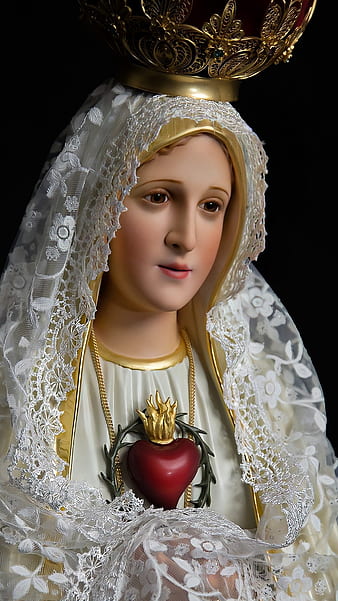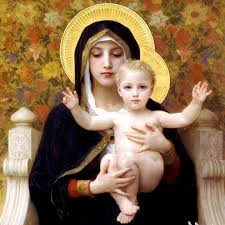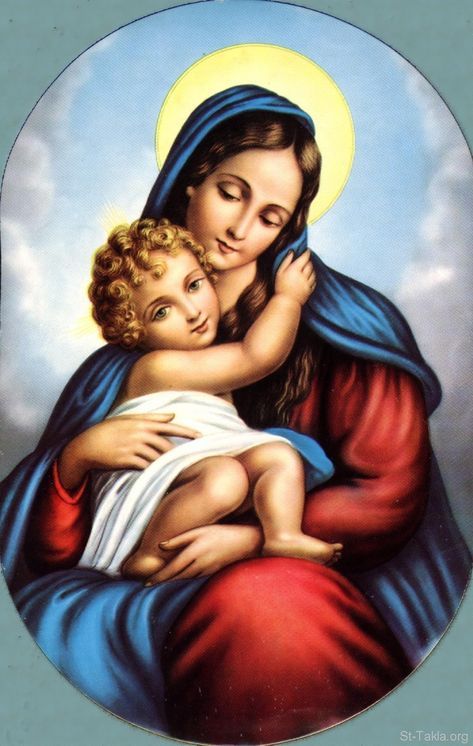Mary, Mediatrix of Grace: A Theological Exploration
Introduction: Defining Key Concepts
This theological exploration examines the role of Mary, the mother of Jesus, as a mediatrix of grace within the Catholic tradition. We will analyze her position, not as a co-equal with Christ, but as a powerful intercessor facilitating the flow of divine grace. Key concepts to be explored include mediation, understood as the act of interceding or pleading on behalf of another; grace, referring to the free and unmerited favor of God; and the theological underpinnings of Marian devotion within the framework of Catholic doctrine. This analysis draws upon scripture, theological interpretations, and the historical context of Marian theology to provide a comprehensive understanding of Mary's role. We will examine this role through the lens of various theological models, including the model of the Church as the Body of Christ and the relational aspects of the Trinity.
Mary: Theotokos and Intercessor
The title "Theotokos," meaning "God-bearer," bestowed upon Mary, signifies her unique role in salvation history. Luke 1:43, where Elizabeth proclaims Mary as "the mother of my Lord," underscores the divine nature of Jesus, whose conception and birth were miraculous events. This divine motherhood positions Mary uniquely to intercede for humanity. This concept aligns with the theological understanding of the communion of saints, where believers intercede for each other, and Mary, as the most holy, has particular access to God's grace.
Mary's Mediation: A Clarification
Catholic doctrine emphasizes that Mary's mediation is subordinate to and entirely dependent on the unique mediation of Christ. Her role is not to supplant Christ's authority but to facilitate the outpouring of his grace upon the world. This understanding is crucial; Mary's role is one of advocacy, not of possessing divine power independently. This concept is analogous to the role of a skilled advocate in a legal setting; they do not make the ultimate decisions, but they skillfully present a case to increase the chances of a favorable outcome.
Biblical and Theological Examples
The wedding at Cana (John 2:1-12) serves as a prime example of Mary's intercession. Her request to Jesus leads to His first public miracle, demonstrating her capacity to influence divine action. This narrative illustrates the efficacy of prayerful intercession and highlights the responsive nature of God towards Mary's petitions. Furthermore, the theological concept of Mary as a type or model of the Church further strengthens this concept. The Church intercedes for humanity, as Mary does, acting as a conduit of God’s grace.
Marian Devotion and the Rosary
The Rosary, a widely practiced Catholic devotion, exemplifies the role of Mary as intercessor. The repetitive recitation of the "Hail Mary" implicitly invokes Mary's intercession for the petitioner’s requests. This practice fosters a deeper relationship with Mary and encourages a contemplative approach to prayer, strengthening the believer's connection to divine grace. The structure of the Rosary mirrors liturgical prayers and forms a communal form of intercessory prayer.
Historical and Ecclesiological Context
The veneration of Mary as Mediatrix is deeply rooted in the historical development of Catholic theology. The writings of saints such as Louis de Montfort reflect the long-held belief in Mary's powerful intercession. This historical perspective, demonstrates the ongoing importance and theological consistency of Mary’s role within the larger context of the Church's understanding of salvation and grace. The consistent teaching of the Church underscores the doctrine's stability and significance.
The Assumption and Mary's Heavenly Glory
The dogma of the Assumption, celebrating Mary's bodily ascension into heaven, further emphasizes her unique relationship with Christ. This event underscores her complete victory over sin and death, highlighting her intimate connection to the divine and her capacity for powerful intercession. The Assumption is seen as an anticipation of the final resurrection and a sign of hope for all believers.
Mary: A Maternal Figure and Model of Faith
Mary's maternal role extends beyond her earthly motherhood. Her compassionate nature, exemplified by her presence at the foot of the cross (John 19:27), mirrors the compassion of God. She embodies the ideal model of faith and obedience, echoing the essential aspects of the Christian life in her complete surrender to God's will. This resonates with theological views emphasizing the importance of mirroring Christ-like actions.
The Church's Teaching and the "Fiat"
The consistent teachings of the Catholic Church reaffirm Mary's role as Mediatrix. Papal pronouncements and official documents consistently support this belief. Mary's "fiat," her acceptance of God's will (Luke 1:38), serves as a model of humble obedience and surrender, a vital aspect of spiritual growth. This aligns with the theological virtue of humility and the necessity of obedience in Christian life.
Personal Devotion and the Goal of Union with Christ
Personal devotion to Mary as Mediatrix cultivates a deep relationship with her, recognizing her capacity to understand and intercede for human needs. This personal connection complements the larger theological framework, providing a tangible pathway for believers to experience the efficacy of divine grace. The ultimate goal, however, remains a deeper union with Christ, with Mary guiding believers toward that ultimate goal of salvation.
Conclusion and Recommendations
This exploration reveals the profound significance of Mary's role as Mediatrix within the Catholic faith. Her intercession, while entirely dependent on and subservient to Christ's mediatorial work, offers a powerful means for experiencing divine grace. Further research could explore comparative theological perspectives on Marian mediation, analyze the impact of Marian devotion on individual spiritual lives, and investigate the sociological aspects of Marian piety across diverse cultures and historical periods. Understanding Mary's role requires a nuanced approach, recognizing the theological distinctions between her role and that of Christ while acknowledging the profound impact of her intercession on the lives of believers. Promoting a deeper understanding of Catholic doctrine related to Marian mediation is crucial for ensuring that devotion to Mary aligns accurately with orthodox theological principles.
Reader Pool:
Considering the theological framework presented, how might a more comprehensive understanding of Mary's role as Mediatrix impact contemporary approaches to intercessory prayer and spiritual formation within the Catholic Church?







No comments yet. Be the first to share your thoughts!